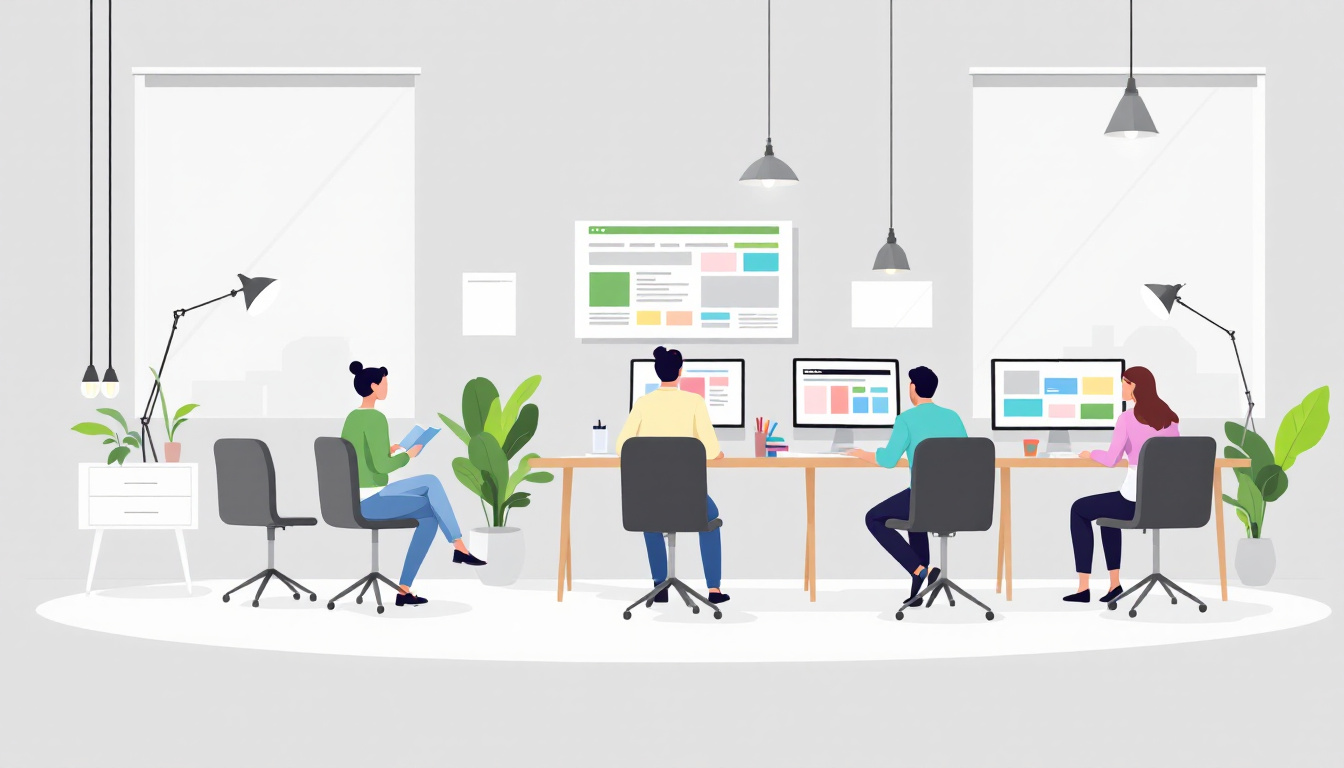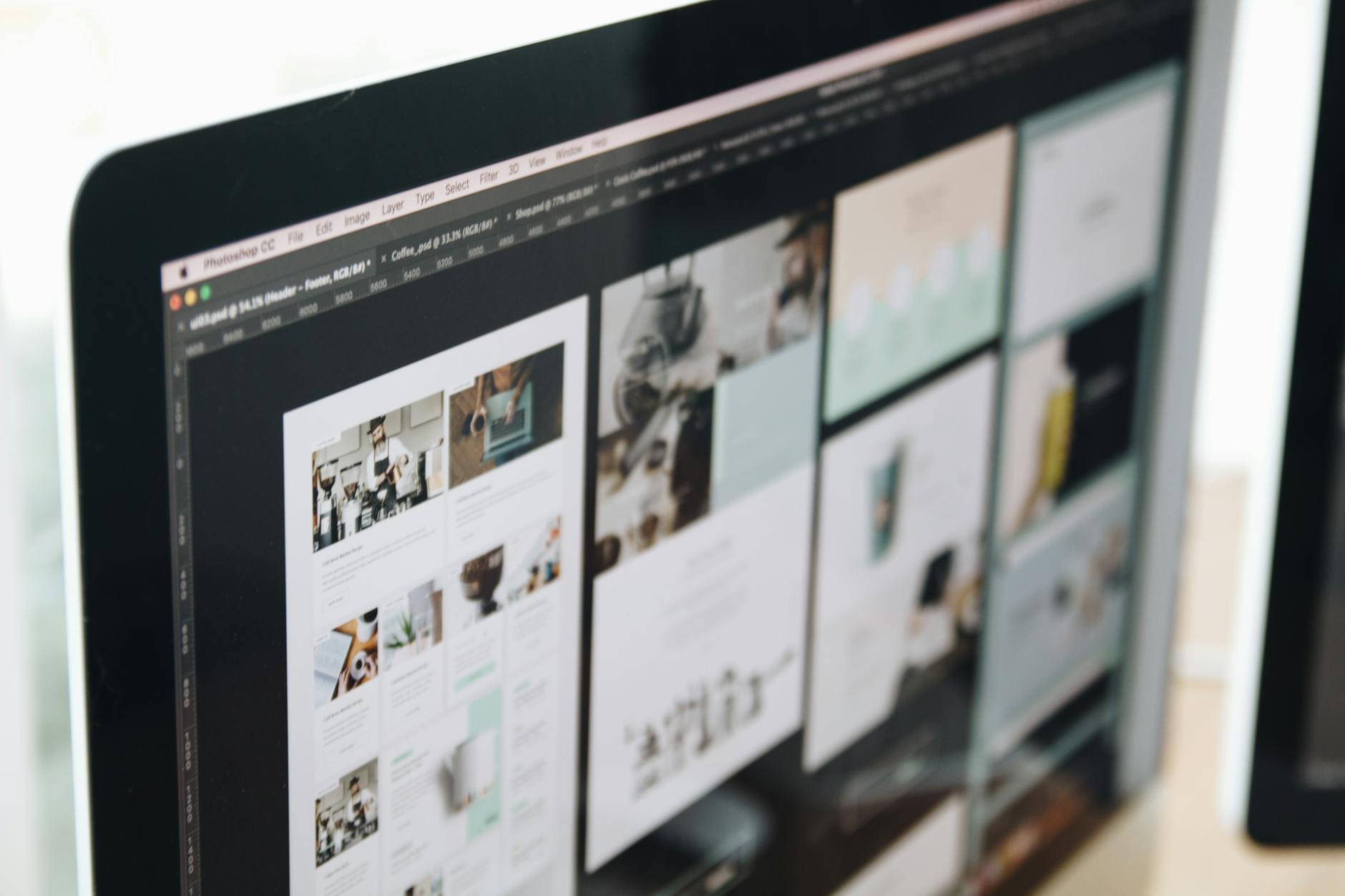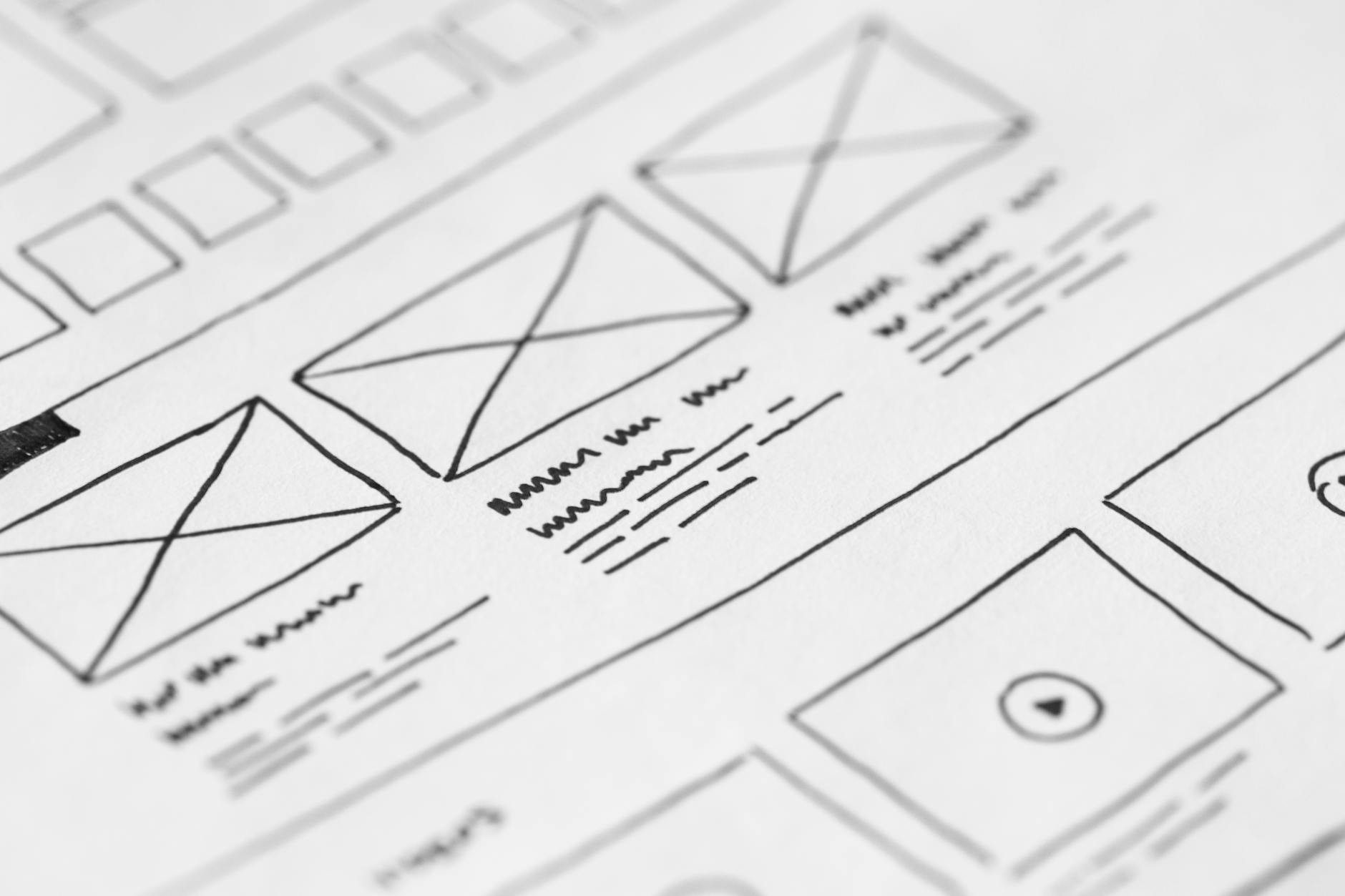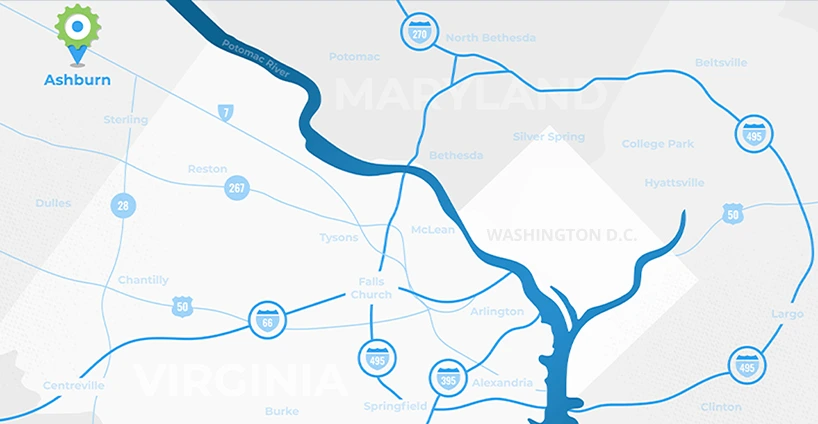How Do I Find a Website Designer? 2025 Guide

Finding a website designer doesn't have to be a headache. Start by looking for designers with a solid track record, clear communication, and a style that matches your brand. In short, the best answer to "How Do I find a website designer?" is to review examples of their work, check client reviews, and schedule a call before you decide.
Here's what you'll gain from this guide:
- Quick tips to spot real talent
- What to avoid when picking a designer
- Easy steps for how to choose a web design company
- What a great web design partner should offer
Whether you're a small business or a growing company, a well-designed website can help you attract more clients and show you're serious about your brand. Your site should look great and help you reach your business goals, and that's only possible when you choose the right partner.
Learning the difference between options, such as custom web design vs templates, will help you make an informed choice.
Ready to make your business stand out? Keep reading, then book a call with a professional for the next step in building your online presence.
Define Your Website Goals and Needs
Before you start searching “How Do I find a website designer?”, take time to define exactly what your business needs from its new website. Doing this helps avoid expensive missteps, wasted time, or choosing a designer who can't deliver. Here’s what matters most:
- Pinpoint the primary goals for your new site
- Outline must-have features and functionality
- Clarify your design style and branding needs
When you enter a conversation with clear goals, you’ll feel more confident and have a stronger voice when choosing the right fit. Let’s break it down step by step.
Identify Your Primary Goals Before Finding a Website Designer
Start by thinking about your “why.” What do you want your website to actually do? This is the foundation for the rest of the process. Typical business website goals include:
- Attracting new customers and leads
- Showcasing products or services clearly
- Providing company information and building trust
- Making it easy for visitors to contact or book you
Narrow these down to the top one or two that matter most. This focus will guide every design and content decision later. For extra help, review some Custom Web Design Solutions to see how business goals shape design direction.
List Must-Have Features
A website that fits your brand isn’t just about how it looks—it’s how it works. List out features and functionality you must have for your business, such as:
- Photo galleries or videos
- Online booking calendars
- E-commerce or payment options
- Contact forms or chat widgets
- Newsletter signup forms
Write these in priority order. Don’t forget mobile responsiveness—today, more than half of traffic comes from smartphones! If you’re unsure, look at competitors or check websites you like and jot down what stands out.
Consider Your Budget and Timeline
The next step is setting your practical limits upfront. Estimate a realistic budget and a deadline for launch. This helps weed out designers who don’t fit your needs early, saving everyone time.
- Budget bucket: Decide what investment makes sense for your business, knowing that website costs vary by complexity.
- Timing: Do you have a launch date or event in mind? Mention this when reaching out to designers.
A clear plan makes conversations smoother and gives you leverage when discussing services and pricing.
Design Preferences and Branding
If you have an established logo or color palette, gather those assets now. If you’re starting fresh, jot down sites you love (and even ones you don’t). Look for:
- Color schemes and typefaces
- Overall mood (fun, elegant, modern, etc.)
- Layout styles (minimal, bold, image-heavy)
Bring these notes and visuals to your kickoff calls. Designers appreciate clarity, and you’ll get results much closer to your vision.
Looking to avoid costly mistakes? Read about Common Website Content Mistakes for smart planning tips.
Find a Website Designer - Preview: What Happens Next?
Once your wish list and requirements are clear, you’ll have a solid foundation for comparing professionals and asking the right questions. The next step is to match your goals with a designer’s skills—and make the decision process simple and stress-free.
Researching and Evaluating Website Designers
To answer “How to find a website designer?” you need a clear, direct process to separate true professionals from risky options. Look for designers who align with your needs, communicate openly, and have a work style you trust. Here’s how to avoid common mistakes, spot problems early, and understand your design options:
- Watch for red flags before you commit
- Understand the pros and cons of custom builds vs templates
- Focus on clear, consistent communication
The section below helps you dodge costly errors and choose confidently.
Red Flags and Common Pitfalls to Avoid
Working with a website designer can transform your business—or create headaches that drain time and money. Many companies fall into the same traps when searching for help. Here are common mistakes to avoid and warning signs that should stop you in your tracks:
- Vague portfolios: If a designer can’t show multiple recent projects, or what you see doesn’t match your style goals, keep looking.
- No clear process or timeline: Steer clear of designers who can’t explain their project steps or set real deadlines. You want someone who walks you through what happens and when.
- Lack of communication: If you’re left waiting for updates or answers to basic questions, expect problems during the actual build.
- No written agreement: Never start a job without a professional contract. Without it, you risk missed deadlines, surprise costs, and ownership disagreements.
- Too-good-to-be-true pricing: Super cheap quotes almost always lead to cut corners or slow, low-quality work. For reference, check the real cost of custom-built websites so you know what to expect.
- No references or reviews: You deserve to see feedback from happy clients. No reviews? Move on.
- One-size-fits-all approach: Great designers tailor their process to you, not the other way around.
Tip: Prioritize designers who are open, organized, and attentive from the start. Clear, two-way communication sets the tone for the whole project. If they’re hard to reach or vague before you start, they’re unlikely to improve later on.
Comparing Custom Web Design vs Templates
When exploring how to choose a web design company, you’ll often end up asking: should I invest in a custom-built website or settle for a template? Each approach has its strengths-and tradeoffs. Let’s break them down to help you decide which is the best fit:
Custom Web Design:
- Pros:
- Unique look tailored to your brand (check out our portfolio for plenty of examples of this one!)
- Full control over functionality and features
- Grows along with your business
- Helps you stand out from competitors
- Cons:
- Higher up-front cost
- Takes longer to complete
- Requires more collaboration and planning
Website Templates:
- Pros:
- Faster to launch—great for tight schedules
- Lower initial investment
- Plenty of ready-made designs
- Cons:
- Less flexibility for special features or branding
- May look similar to other websites
- Harder to scale if your business needs grow
Want a deeper comparison? Read this detailed guide: Custom web design vs templates.
Choosing the right design path depends on your business size, your must-have features, and the statement you want your site to make. Taking a shortcut today might hold your brand back in the long run—think about how your website supports your business goals for years to come.
If you’re not sure what best matches your needs, ask your designer for examples of both custom work and template-based websites. This practical step is how you find a website designer who fits your style, timeline, and budget.
Questions to Ask Before You Find & Hire a Web Designer
How do I find a website designer who’s truly right for my business? Before you sign any contract, asking the right questions makes all the difference. Selecting a web designer isn’t just about picking someone with a polished portfolio — it’s about knowing they communicate well, understand your needs, and will deliver on time and on budget. Clear answers help you sidestep costly mistakes and wasted time. Here are the key things to cover:
- Find out how their process works and how they handle deadlines.
- Check if their style, experience, and support match what you expect.
- Confirm they support your goals for branding, analytics, and future updates.
Experience and Previous Work
 Photo by Tranmautritam
Photo by Tranmautritam
Hiring a website designer is like choosing a business partner. Always start by reviewing their previous work and style. Don’t just accept a simple showcase — dig deeper:
- Portfolio Variety: Ask to see recent projects and live sites, not just screenshots.
- Industry Experience: See if they have worked with companies like yours.
- Results: Check if they can share results, such as improved site traffic or engagement after launch.
This helps you judge if their past experience lines up with your expectations.
Process, Communication, and Project Management
Great design means nothing if your project drags on or gets lost in translation. The best designers have a clear, step-by-step process and outline how they’ll communicate with you.
Ask questions like:
- How often will we check in on project progress?
- Who is my main point of contact?
- What happens if deadlines slip or feedback is delayed?
Understanding their workflow shows if they’re organized and will keep your project on track. Clear answers build trust and keep everyone accountable.
Customization and Technology
Every business is different, so your website should be too. Ask how flexible the designer is with features and whether they favor templates or custom builds. Find out:
- Do you build custom designs or use pre-made themes?
- How do you handle needed features (such as contact forms, e-commerce, booking)?
- Is the website easy for me to update later?
These points make sure your site fits your business, both now and as you grow.
SEO, Analytics, and Ongoing Support
If people can’t find your site, even the best design won’t help. Ask:
- Will my website be built with SEO best practices?
- Are analytics tools set up so I can track visitors?
- What kind of post-launch support and updates do you offer?
Good designers help you launch a site that works for today — and set you up with tools for long-term success. For proven steps to help understand web design and guide you on how to choose a web design company, see 10+ Tips to Build a Better Website by SEMrush
Budget, Ownership, and Next Steps
No one likes surprise charges. Confirm the details up front:
- What is included in your price and what costs extra?
- Will I own my website and all related assets after launch?
- Are deadlines, approvals, and payments clearly outlined in the contract?
Sorting these points now prevents frustration and costly disputes later on. It also ensures your investment is protected for years to come.
For more on why a tailored approach matters, explore custom web design services and review how top providers deliver results with transparency and clear follow-through.
Need Guidance?
Ready to start your search? Take these questions into your first call with a designer. Compare responses with your needs — and don’t be afraid to walk away if something feels off. The right web partner won’t just answer honestly, but will make you feel understood and supported. You’ll gain peace of mind knowing you’ve done your homework and picked someone who’s in it for your success.
Understanding the Website Design Process
Trying to answer, “How Do I find a website designer?” starts with knowing what actually happens after you hire one. The design process can feel unclear, but knowing the steps gives you more control and confidence. Here’s a quick preview of what to expect—and why it matters:
- 5 key stages every pro follows
- Why communication at each step keeps things on track
- What you should review and approve along the way
When you understand the process behind how to choose a web design company, you can spot the real experts, avoid confusion, and get a site that truly fits your business.
 Photo by picjumbo.com
Photo by picjumbo.com
Discovery: Aligning on Business Goals
The website design process always starts with a discovery phase. This is where you and the designer clarify what you want your site to accomplish. Expect to discuss:
- Your brand, services, and target customer
- Must-have features (like forms, galleries, or e-commerce)
- Inspiration sites and what you like or dislike
A good designer will ask thoughtful questions and outline how they will meet your needs. They may bring up strategy or even suggest improvements you hadn’t considered. When you see this level of planning, it’s a green flag you’re working with a pro.
Planning and Structure: Building Your Site’s Blueprint
With goals set, the next step is mapping out your site. Here’s what usually happens:
- Sitemaps: A simple diagram of all the pages and how they connect
- Wireframes: Basic sketches showing where main elements (headings, images, buttons) will go
- Content planning: A list of needed copy, new photos, or product info
This step is like creating a house blueprint before building. It keeps the project organized and helps avoid missed details later on. Your designer should walk you through each draft, explain choices, and invite your feedback. For more detail on how to evaluate these early designs, explore this comprehensive guide on evaluating website design.
Design Concepts: Bringing Your Brand to Life
The real creativity starts once wireframes are approved. Designers will:
- Create mockups with your colors, logos, and images
- Show sample page designs (often for your homepage and 1-2 key pages)
- Share options for imagery, fonts, and navigation menus
You’ll see your vision turn into an actual look and feel. This is usually the most interactive phase, with fast feedback loops and edits. Make sure colors, layouts, and tone fit your brand—now is the time for honest opinions.
Development: Turning Designs into a Working Site
After designs get the thumbs up, it’s time to build. Developers:
- Code the behind-the-scenes parts, making everything interactive
- Add all content, photos, and features from your wishlist
- Ensure your site works flawlessly on phones, tablets, and every browser
A professional team will let you preview the site on a private link, test forms, and check links. Ask about built-in features like SEO, analytics, and e-commerce here. This makes a smooth launch much easier.
Review, Testing, and Launch
Before your new website goes live, both you and the designer must review it closely. You’ll:
- Check every page for typos or missing images
- Test all forms, buttons, and interactive elements
- Review mobile and tablet views for any issues
After your final approval, your website is published and made visible to the world. Most pro designers also offer support for site fixes or questions post-launch.
What to Expect from a Quality Design Partner
A true professional will always explain the process before starting. Look for:
- Written steps and a clear timeline
- Regular, proactive updates during the project
- Flexibility to address questions and changes
Quality web design companies will also have process descriptions on their sites, like those found in custom web design services. This transparency signals trustworthiness.
Why Process Matters When Deciding How to Choose a Web Design Company
Knowing the steps lets you compare designers more effectively. If a designer skips structure or rushes the creative brief, that’s a warning sign. Using a clear process, as advocated by pros in guides like Website Design: The Complete Guide, helps you:
- Avoid wasted time and costly mistakes
- Get design, development, and support-all in one place
- Own your timeline from start to finish
Being familiar with each phase empowers you to make better decisions. If you expect these steps and ask about the process early, you’ll feel more prepared and confident in your choice—giving your business the polished, results-driven site it deserves.
Conclusion
Finding the answer to "How to find a good website designer?" is easier with a plan. Here’s what matters most:
- Define your website goals, style, and features up front
- Review each designer’s past work, process clarity, and communication
- Ask smart questions before committing
- Understand the web design process to spot real pros
Choosing the right partner means better results for your brand-faster, and with less stress.
The benefits of hiring a professional go far beyond looks. You get expert guidance, a site that works across devices, and a partner who helps your business grow. Working with a specialist also often means stronger user experience, clear calls-to-action, and better conversions. For examples of these advantages in action, see our in-depth guide on how to design a best-in-class website.
Ready to take action? Start with a discovery call with a trusted agency, such as ImageWorks Creative. Share your goals, explore what sets each designer apart, and ask how their process supports your success.
- Finding the right fit is the quickest way to build a website you’re proud of.
- A proven team can handle design, development, and ongoing support—all in one place.
Still deciding? Compare your needs to the solutions offered in custom web design services to see what’s possible.
If you want your business to stand out, don’t settle for generic. Book a consultation, ask questions, and get the guidance you deserve. What would a stronger online presence mean for your company? Tell us your thoughts or reach out today.
-Joseph





